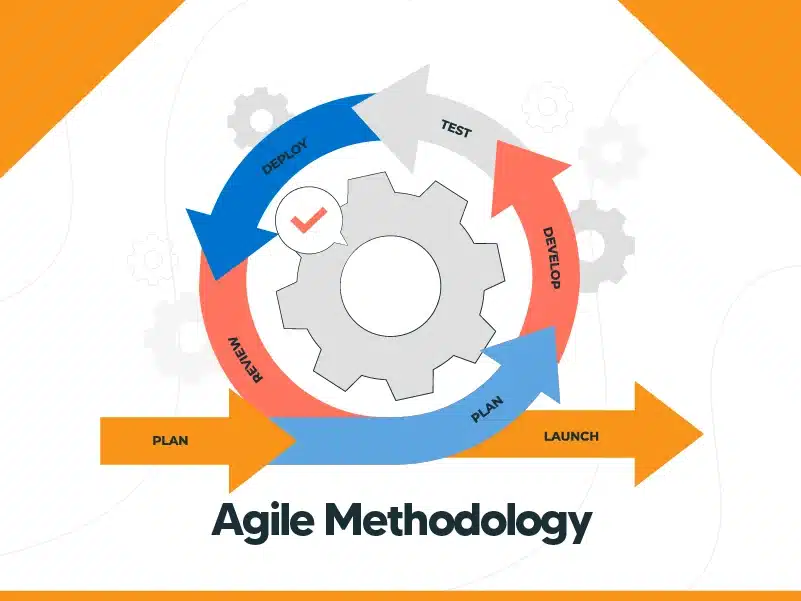An essential element of team effectiveness involves grasping and overseeing the extraneous cognitive load, which pertains to the mental energy invested in tasks that are not fundamental to the core objectives.
In the fast-paced world of software development service, where change is constant and innovation is key, traditional project management approaches often fall short of meeting the demands of modern businesses. This is where Agile methodology emerges as a beacon of efficiency, providing a flexible and collaborative framework that prioritizes adaptability and customer satisfaction. In this blog post, we will explore how agile project management streamlines development processes, fostering efficiency and delivering superior results.
Understanding Agile Methodology
Agile software development is not just a set of practices but a mindset that prioritizes iterative development, collaboration, and customer feedback. Unlike traditional methodologies that follow a linear, step-by-step approach, Agile embraces change and welcomes continuous improvement throughout the development cycle. It is based on the Agile Manifesto, which values individuals and interactions, working solutions, and customer collaboration over processes and tools.
Iterative Development for Rapid Progress
One of the core principles of Agile is iterative development, where software is built incrementally in small, manageable chunks known as iterations or sprints. Typically spanning a duration of 2-4 weeks, every iteration concludes with a product increment that is potentially ready for shipping. This approach allows teams to deliver value to customers more frequently, enabling them to respond quickly to changing requirements and market conditions.
The iterative nature of Agile software development also facilitates early and continuous testing, reducing the likelihood of defects slipping through the cracks. By catching issues early in the process, teams can address them promptly, leading to a higher-quality end product.
Continuous Collaboration and Communication
Agile project management emphasizes the importance of collaboration and open communication among team members, stakeholders, and customers. Cross-functional teams work closely together, breaking down silos and promoting a sense of shared ownership. Daily stand-up meetings, where team members discuss progress, challenges, and plans, keep everyone on the same page and foster a collaborative spirit.
Regular feedback loops are another crucial aspect of the Agile development process. By involving customers early and often, development teams can ensure that the product aligns with user expectations. This ongoing dialogue not only improves the end product but also builds trust between the development team and the stakeholders.
Embracing Change with Flexibility
Traditional project management methods often struggle to adapt to changing requirements, leading to delays and cost overruns. The agile development process, on the other hand, welcomes change and sees it as an opportunity to enhance the product. The iterative cycles allow teams to incorporate feedback and adjust priorities, ensuring that the final product meets evolving business needs.
The flexibility of Agile software development is particularly beneficial in industries with rapidly changing market dynamics. Businesses can pivot quickly, responding to emerging trends or addressing unforeseen challenges without compromising the project timeline.
Enhanced Transparency with Agile Frameworks
Agile project management frameworks, such as Scrum and Kanban, provide clear structures and visual tools to enhance transparency and project visibility. In Scrum, for example, a product backlog outlines all the features and tasks, while a sprint backlog details the work to be done in a specific iteration. Burndown charts visually represent progress, making it easy for all stakeholders to understand the project status at a glance.
This transparency not only helps teams stay focused on their goals but also enables stakeholders to provide timely feedback. It eliminates misunderstandings and ensures that everyone involved has a shared understanding of project priorities and progress
In conclusion, Agile methodology stands out as a powerful approach to software development service, offering a dynamic and collaborative framework that adapts to the ever-changing needs of the industry. Through iterative development, continuous collaboration, flexibility, and enhanced transparency, Agile streamlines development processes, allowing teams to deliver high-quality products with greater efficiency.
As businesses across various industries recognize the advantages of Agile, its principles are extending beyond the realm of software development service. From marketing to human resources, organizations are adopting Agile practices to drive innovation, improve communication, and enhance overall efficiency. As we navigate the complexities of the modern business landscape, the Agile development process continues to prove its worth as a transformative force, empowering teams to thrive in an environment of constant change.


